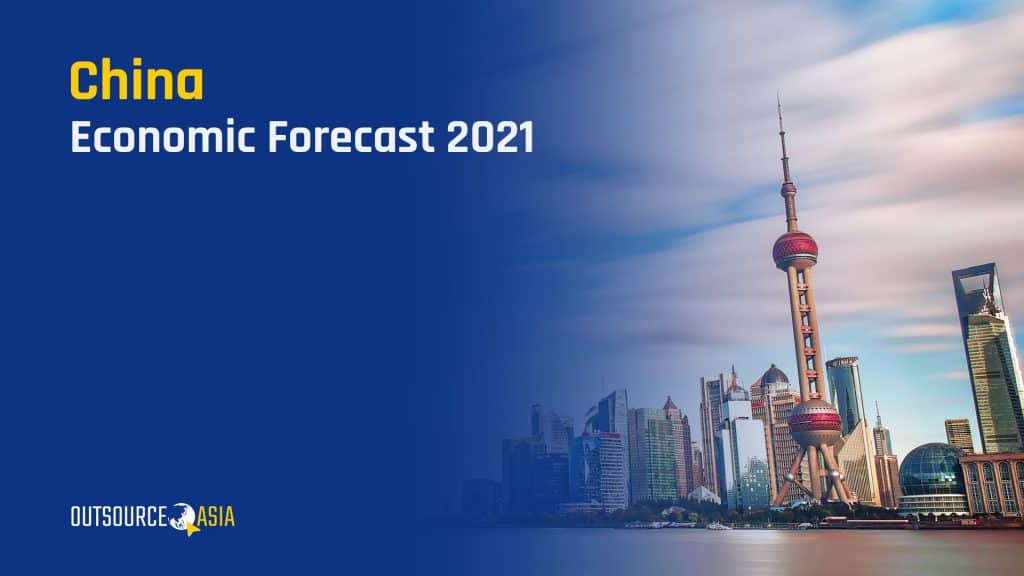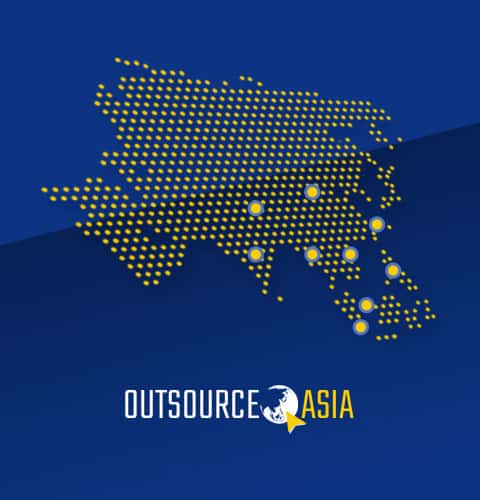
China Economic Forecast 2021
The China Economic Forecast 2021 summarizes key economic and social developments over the past year. It also presents findings on the evolution of policy reforms, external/global conditions, and financial-market dynamics from world-recognized financial institutions and multinational professional services authorities, assessing their implications for the country’s medium-term economic outlook.
China’s economy, according to National Bureau of statistics (NBS), experienced a GDP growth surge of 18.3% year-on-year, assisted by solid activities in the construction and services sectors as well as effective virus containment and supportive monetary policies. This supposedly positive economic outlook, as Bloomberg economists predicted, is not as surprising as it looks like considering the lower base in Q1 2020 – and would eventually have to be scaled back to 8.3% due to weakening productivity growth, high debt load, increasing international tensions, and China’s ageing population.
China’s V-shaped economic rebound during the pandemic has been attributed to the following:
- Industrial growth especially high-tech manufacturing output posted rapid growth of up to 39.9% on a year-on-year basis.
- Online consumption accounted for up to 25% of the total retail sales of consumer goods.
- Export of medical materials and medicines rose significantly at 40%.
- Service sector output in information technology, software, and finance contributed to $36 billion in total profits for just Q1 2021 only.
- Medical care and online education have witnessed rapid development which make these sectors ripe for investment.
- Foreign capital inflows showed net growth while Ren Min Bi (currency of People’s Republic of China) steadily strengthened.
What You Need To Know About China’s 14th Five-Year Plan (2021-2025)
In March 2021, China approved the five-year strategic blueprint for its economic development which has major themes such as:
- Becoming a self-reliant manufacturing and technological powerhouse
China’s focus on ‘Innovation: The Heart of Modernization Drive’ will propel the country as an advanced global superpower in innovation, technology, and manufacturing. To make this happen, an ambitious national blueprint includes the following:
- To elevate R&D expenditures by at least 7% every year while granting up to 75% tax deduction on enterprises’ R&D costs and up to 100% tax deduction for manufacturing enterprises
- To strengthen competitiveness in agricultural machinery, aircraft development, new energy vehicles, and robotics
- To achieve major breakthroughs in cloud computing, semiconductors, and next-generation artificial intelligence among other core technologies
- To ensure fair market competition by coming after business monopolies and launching anti-trust investigation on tech giants
- To establish more technology innovation centers, engineering facilities, and national laboratories for improving the new ‘whole-of-the-nation’ system (juguo tizhi)
- Focusing on the quality rather than the quantity of growth
Due to the continued economic uncertainties around the coronavirus pandemic, Chinese Premier Li Keqiang reported that the government has set a 6% GDP growth target for 2021, well below the 8.4% average annual forecast growth. This decision will help the government keep the economy running within an “appropriate range”, avoid excessive pandemic-related stimulus, and achieve higher-quality growth. Defusing domestic financial risks would curb the rise of hidden local government debt and encourage citizens to bolster its economic self-reliance amidst an increasingly challenging external environment. Commerce Minister Wang Wentao, however, stressed in a press conference that “deepening China’s integration with the global economy remains an absolute priority”.
- Prioritizing new urbanization and rural revitalization for ‘common prosperity’
President Xi’s signature campaign since 2012 was to prevent nearly 100 million people from falling back into poverty and to achieve ‘common prosperity’. In Q1 2021, the Chinese government declared victory in the efforts to narrow the wealth barrier between cities and the countryside. The National Administration for Rural Revitalization is now tasked to pursue people-centered urbanization strategy and expand the achievements of the battle against poverty. This will lead to more people move to urban areas, greater investment in infrastructure, and increased consumption from higher-income demographics. All of these are critical for unleashing the full potential of China’s consumer economy.
- Implementing a carbon neutral economy in line with global biodiversity agenda
To achieve carbon neutrality by 2060, China will make decisions to:
- Reduce energy intensity by 3% and 13.5% in 2021 and 2026, respectively.
- Push non-fossil fuel usage for energy use at 20% by 2025.
- Develop new energy sources while promoting the clean and efficient use of coal.
- Expand nuclear power capacity by 40% to reach 70 gigawatts by 2026.
- Improve safeguards within the coal, crude oil, and natural gas industries.
- Promoting a more mutually beneficial China-U.S. business relations
This year’s closed-door session between the U.S. and China put emphasis on stabilizing its frayed bilateral relationship though no further details were provided. However, it has been obvious that tensions will persist in the fiercely competitive technology space due to the American government’s goal to preserve its technological preeminence amidst the Chinese government’s relentless pursuit to become a global powerhouse for innovation. Moving forward, both administrations must reach an acceptable compromise to be able to positively tackle pressing global challenges that’s affecting businesses in their own countries.
- Improving management of Hong Kong
During the National People’s Congress (NPC) in March 2021, lawmakers approved the restructuring of revamp Hong Kong’s electoral system to ensure that pro-Beijing leaders will be put in key government positions and get the city back on track. Critics pointed out that the lack of political autonomy will undermine its appeal as a leading global finance and commercial hub. However, Chinese authorities guaranteed that maintaining the city’s commercial stature is a top priority.
- Highlighting China’s leadership role in regional and global governance
This includes the following key actions:
- Accelerate negotiations on a free-trade agreement with Japan and South Korea
- Support the implementation of the Regional Comprehensive Economic Partnership (RCEP)
- Work with the Comprehensive and Progressive Agreement for Trans-Pacific Partnership (CPTPP)
- Enact China-E.U. Comprehensive Agreement on Investment (CAI)
- Leverage multilateral, bilateral, and regional economic frameworks to boost its global power and influence
What’s next for Chinese businesses?
Companies are expected to come up with a proactive, forward-looking business plan that is in line with China’s 14th Five-Year Plan (FYP) national priorities. This will help them mitigate risks and challenges that may arise as years pass by while ensuring continued success in the Chinese market.
About Outsource Asia
Outsource Asia is committed to providing industry and technology expertise, solutions, frameworks and tools to businesses looking to explore, build, and manage outsourced teams. Its seasoned outsourcing professionals connects organizations of all sizes and types to top-notch outsourced suppliers and service providers in the Philippines and around the world.
What services do you want to outsource? Schedule for FREE CONSULTATION today.


